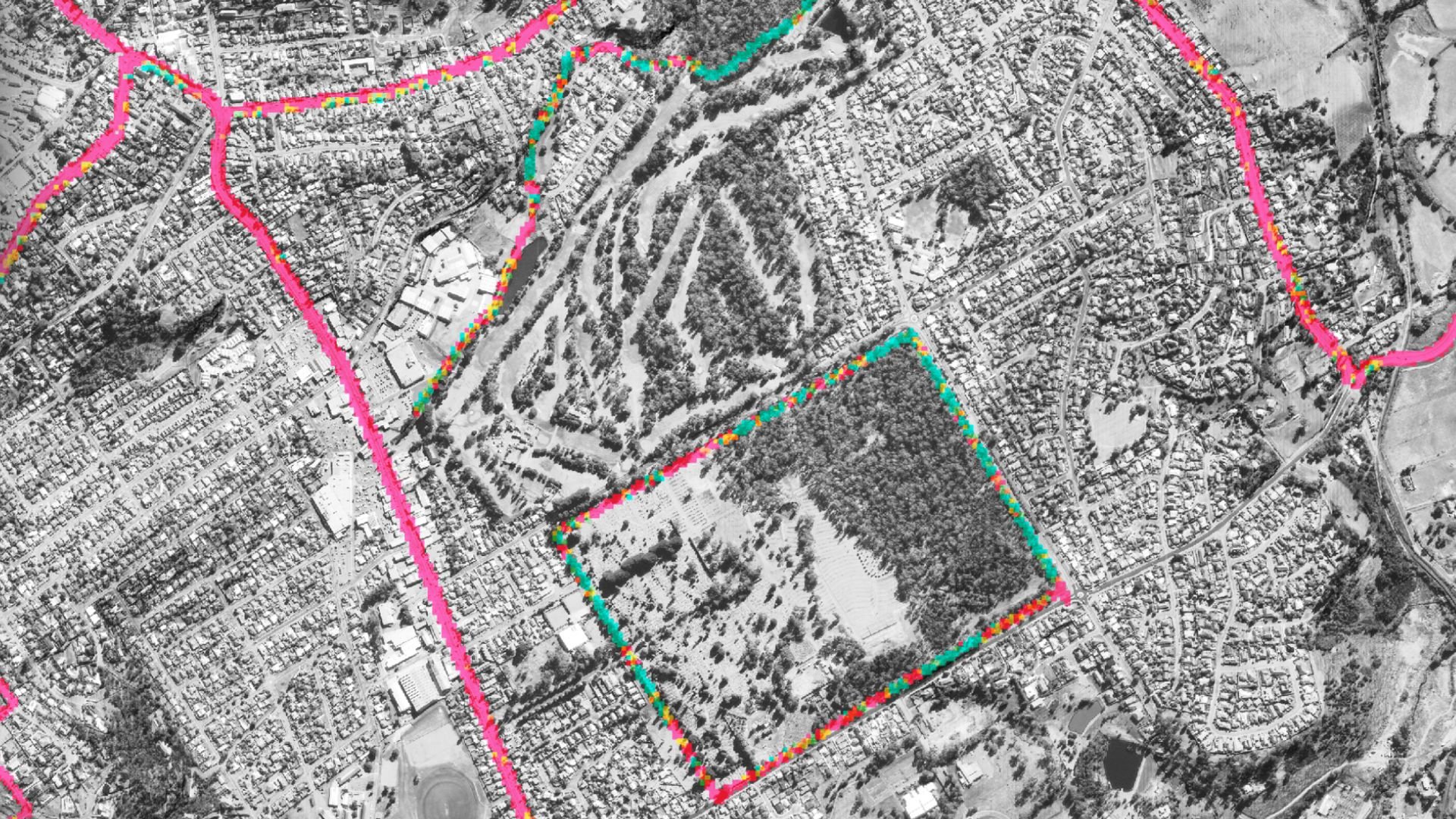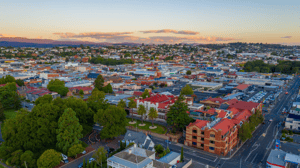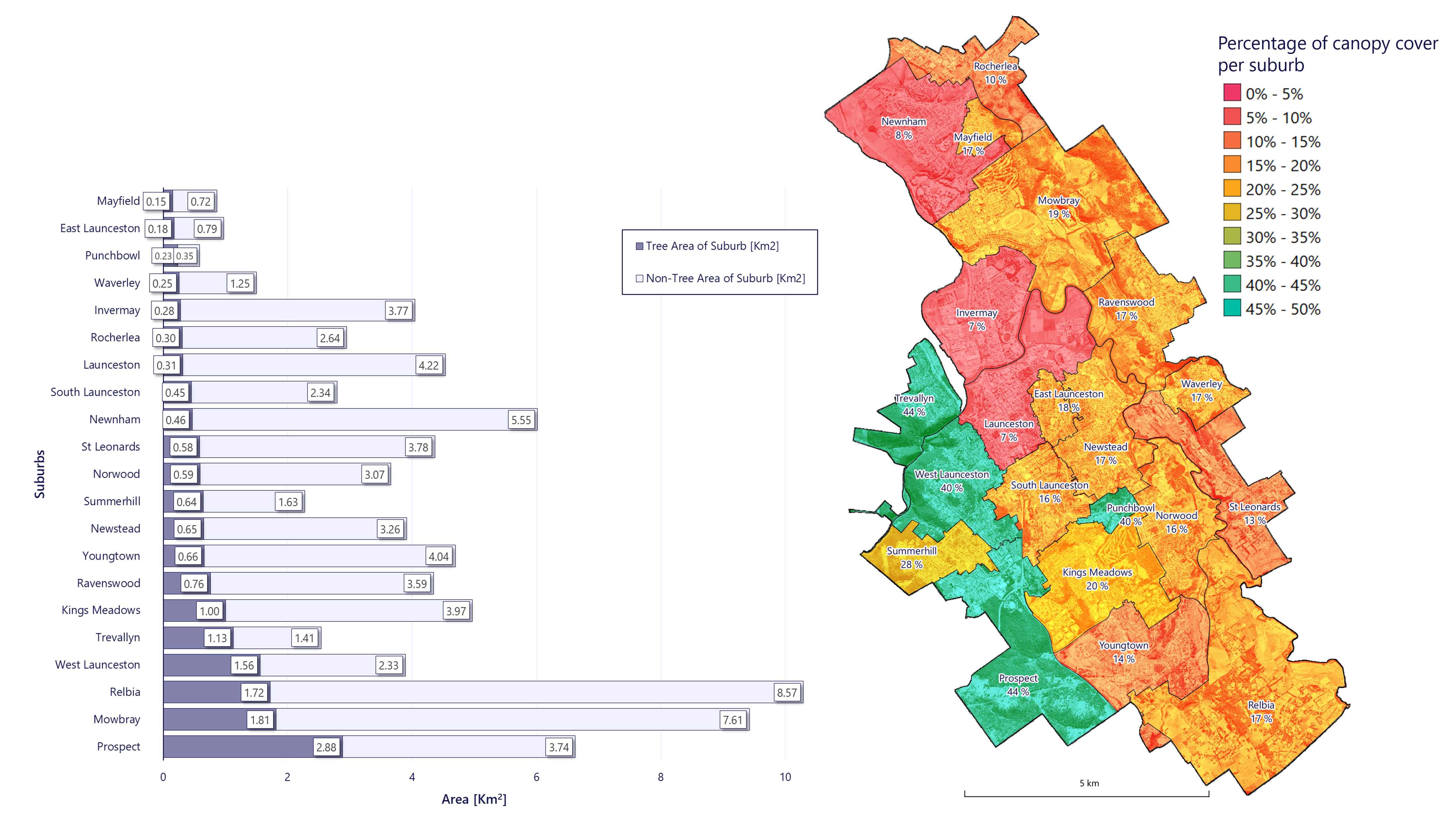CLIENT
City of Launceston, Tasmania, in collaboration with the University of Tasmania and Geoneon.
WHAT WE DID
- Collaborated on the development of an Urban Forest Strategy.
- Conducted a comprehensive assessment of urban canopy and population vulnerability.
- Utilised AI-based algorithms for detailed canopy mapping.
- Engaged the community through workshops to gather insights and preferences.
PROJECT INFORMATION
In response to the increasing severity of heatwaves in Australia and their disproportionate impact on vulnerable populations, the City of Launceston mandated the creation of an Urban Forest Strategy. The strategy aimed to guide Launceston in adapting to climate change through strategic urban greening, particularly in response to the urban heat island effect.
This initiative was a collaboration between the University of Tasmania, Geoneon, and local communities.

CHALLENGES
- Mapping an urban area of 85.2 km².
- Addressing the impact of heatwaves on diverse socio-economic groups.
- Integrating community input with scientific research and data analysis.
RESULTS
The project resulted in a comprehensive Urban Forest Strategy, underpinned by Geoneon's high-resolution satellite imagery analysis and AI-based canopy mapping. Key findings included:
- A baseline canopy cover of 19.5% across Launceston, with significant variability among suburbs.
- The identification of areas with lower canopy cover correlating with higher land surface temperatures and socio-economic vulnerabilities.
- Insights into the urban heat island effect and its mitigation through increased canopy cover.
- Recommendations for strategic tree planting and urban forest management, prioritising vulnerable communities.
URBAN FOREST STRATEGY
The strategy is built on principles of community-focused outcomes, evidence-based decision-making, innovation, and collaborative approach. It emphasises:
- Establishing a current baseline for urban canopy.
- Assessing population vulnerability in relation to heat susceptibility.
- Reviewing scientific literature and best practices for urban forest approaches.
- Summarising community engagement findings.
- Providing recommendations for creating and managing a resilient urban forest.
URBAN GREENING STRATEGY REPORT
The City of Launceston’s Urban Greening Strategy represents a significant shift in approach, moving from individual tree management to a holistic urban forest perspective. This strategy, Launceston’s first, aims to create a resilient, connected, and diverse urban forest. It aligns with broader city plans and emphasises economic, social, cultural, and environmental benefits. Notably, the strategy acknowledges the current urban forest coverage of about 19% and sets out to increase this in line with national standards. It focuses on key themes like climate change mitigation, urban heat reduction, and creating healthier ecosystems, alongside an action plan for urban greening.TABLE OF CONTENTS
loading...
COMMUNITY ENGAGEMENT
Community workshops revealed strong support for urban greening and the role of trees in climate change adaptation. These insights were crucial in shaping the strategy, ensuring that it reflected local needs and preferences.
TECHNOLOGY AND INNOVATION
Geoneon's advanced AI algorithms facilitated efficient, accurate, and cost-effective canopy mapping, providing a reliable basis for monitoring urban forest evolution.
CONCLUSION
The collaboration resulted in a forward-thinking Urban Forest Strategy, aligning Launceston’s green infrastructure management with climate change adaptation and community well-being. This strategy serves as a model for other cities facing similar challenges.


